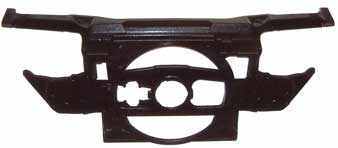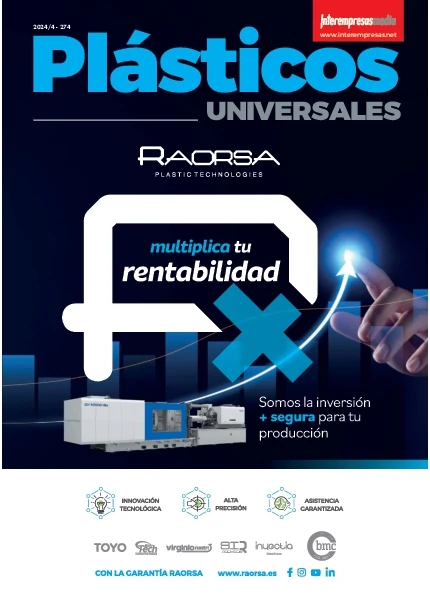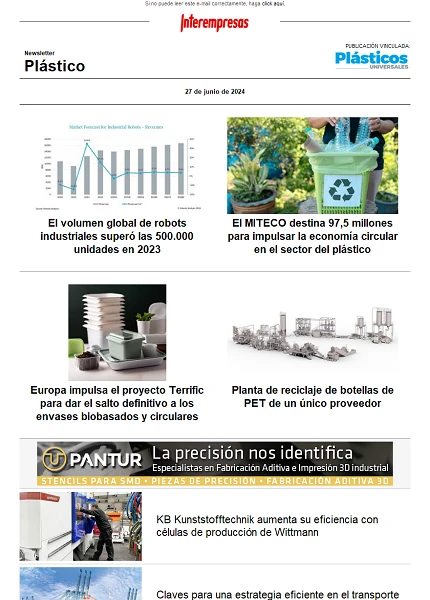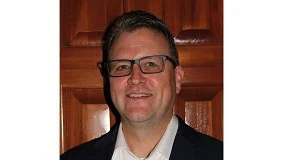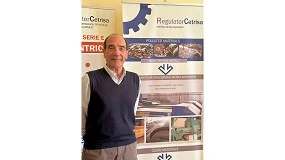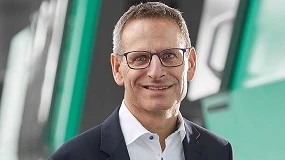This news article was originally written in Spanish. It has been automatically translated for your convenience. Reasonable efforts have been made to provide an accurate translation, however, no automated translation is perfect nor is it intended to replace a human translator. The original article in Spanish can be viewed at
Lo último en ligereza: termoplásticos reforzados con fibra largaThey can transform profitably using new techniques, such as the processing of thermoplastics (D-LFT) long fiber-reinforced
The ultimate in lightweight: thermoplastic long fiber-reinforced
In its constant quest of cheaper materials and with the lowest possible weight, manufacturers of automobiles and aircraft, mainly, have discovered the ultimate in lightweight: reinforced Thermoplastics (LFT) long fibre. This material offers, in addition to weight savings, a range of important benefits, including greater resistance, greater security, greater functionality and durability to the piece in question.
Prototype of a mounting bracket made of reinforcement of local tissue in FLL
Behind have been those times in which a small rectangular window in the roof of the vehicle should achieve that the occupants had the feeling of going in a convertible, feeling the Sun and the wind on the face... Today, new generation cars have extensive absolutely innovative panoramic roofs. The advertising says that they create a new sense of space and perception of the landscape. And it is true. The roof of the C3 Pluriel of Citroën, for example, may even discover altogether. Also in the X 3 or the series 5 Touring of BMW, the newest version of the VW Golf or the Opel Astra, roofs can replicate widely.
In order to offer the best panoramic view and at the same time, provide sufficient structure of roof stability, essential for the structure pieces must present a high resistance with the lowest possible weight: a challenge for designers and manufacturers. And this is where come onstage with long fiber reinforced thermoplastics.
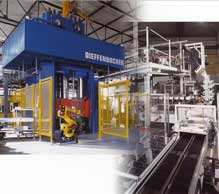
Gripper system takes long-fiber-reinforced plasticized material and the handling robot transfers it to the press.
Very close to heaven
With C3 Pluriel of the French auto group PSA Peugeot-Citroën can almost touch the sky. The multiple possibilities of its practicable ceiling allow to convert, with a couple of buttons and simple manoeuvres, a conventional sedan in a convertible, a spider or even in a pickup. This modularity is possible mainly thanks to a rotating frame, in seconds, making disappear the cowling and the rear window in the trunk. This frame is manufactured from polyamide PA 6.6 long glass fibre reinforced and tintada in the special grey tone of Citroën. The House that offers this polyamide is Ticona GmbH, the German company also responsible for PP polypropylene reinforced with long glass fibre that is used to make the framework of the Lunette, integrated in the roof of the Pluriel. The technique of the "outsert" used in this case is a special variant of the injection molding that allows to inject all the functional elements directly on the plate, a metal frame. The long glass fibre reinforced plastic provides simultaneously the rigidity and the functionality required. The two components of FLL are partially visible, and integral part of the overall concept of roof and also present in the optical view an excellent solution.
These thermoplastic allow to optimize the resistance, rigidity and the milks of parts of a considerable
It all started with the GMT
These components not only contribute to make more attractive design, but minimize the weight, reduce Assembly costs and improve the mechanical properties. The use of thermoplastic long fiberglass-reinforced allows to optimize particular resistance, rigidity and the milks of substantial parts. The degree of optimization of these physical values depends, however, the length of the fiber, the percentage of fiber and the orientation of the fiber, as well as the preparation of the mixture fibra-matriz. In this area, should still go a long way. Even you are looking for the perfect method that allows to integrate in the plastic - and therefore in the final product - the longest fiber possible without damaging them, under the best conditions and at the lowest possible cost.
The moulding is used for the manufacture of long fiber reinforced thermoplastic articles conventional injection
The oldest method of manufacture of plastic parts reinforced with long fiber is the GMT method, which already has been used since a long time for the transformation of plastics reinforced with fibreglass (GRP). In this procedure, with fabrics of glass fibre reinforced thermoplastics become generally presses as semi-finished products. However, if one takes into account a number of requirements, other techniques can be used.
In general, for the manufacture of long fiber reinforced thermoplastic articles molding is used by conventional injection, and granules of long fiber, transfer molding. Recently, D-LFT technology has also ripped with force as one of the most promising techniques to treat something longer fibers.
The semimanufactured product disappears
One of the pioneers of the D-LFT technique is the German manufacturer of presses Dieffenbacher. At the beginning of the fever of long fiber, this German company already had the brilliant idea of incorporating the fibers directly in order to eliminate the traditional intermediate step of semi-manufactured product of the procedure of GMT, used for decades.
Instead of a semimanufactured product, creates a "composite" based on a matrix of polypropylene, for example, with corresponding additives and a content fibreglass ranging usually between 20 and 40 per cent. Immediately after the mixture in a "compounder", this "composite" is introduced in the press of forming a team of download. There, the piece is pressed.
In this way eliminates the cost of manufacture of the product semi-manufactured to measure, as well as the costs of logistics. In addition, since energy costs is not necessary to heat the tissues of fiberglass is reduced.
The firm Dieffenbacher presented in the Düsseldorf 2001 K this new technique developed by them at the end of the 1990s. That same year, the invention received the "Innovation Award" awarded by the Arbeitsgemeinschaft Verstärkte Kunststoffe Technische Vereinigung (AVK-TV), a German Association that brings together professionals in the field of reinforced plastics in Frankfurt. In this edition of the K from three years ago, the firm Dieffenbacher also introduced the D-LFT technique described in combination with the Inline - Compounding (ILC) technique. The nucleus of the team designed specifically for the application of the D-LFT-ILC technique consists of two independent devices that are responsible for obtaining the molten mass reinforced with fiber. The plastic - polypropylene (PP) is usually - prepared in an extruder of conventional double spindle (the "compounder"). Fibers are incorporated into the melt - to which additives have been added and which is now a high viscosity - a double screw mixer. Finally, it shapes parts FLL in a conventional hydraulic press.
At the end of the month of March, in the European Conference of Composites (JEC) of Paris, Dieffenbacher introduced a more advanced concept of D-LFT-ILC technique. This new concept, developed in partnership with the Fraunhofer Institut für Chemische Technologie (ICT), allows you to use for the first time more sophisticated plastics, the so-called technical plastics, as the polyamide (PA 6 and PA 6.6), polyethylene terephthalate (PBT) or ABS butylene. This optimized mode of processing directly from FLL also offers great potential for savings. According to the partners in the project, compared to the traditional process of semi-finished products, the use of this technique with a prototype computer allowed reduce costs up to 35 per cent in parts with different percentages of fiberglass.
Arrays of PP and PA
A method that has taken advantage of Ticona to develop thermoplastics technical, also called "advanced materials". This company headquartered in Kelsterbach, close to the airport of Frankfurt, Germany, is used as reinforcing material fibers of glass, carbon and aramid and, in some special cases, strands of stainless steel. Ticona already has in the market long fiber reinforced thermoplastics two: "celstran" and "Compel" matrix of PP or PA. The length of the fiber is 12 mm in the "Celstran" and 25 mm in the "Compel". For the production of these materials, the company uses a patented special pultrusion process. The percentage of fiber varies between 30 and 60 per cent.
The choice of the material for the matrix - like the percentage of reinforcement fibres - depends in each case of the application. Ticona FLL products are compatible with almost all the methods available today: moulding by injection, transfer molding, extrusion, blow molding and termomoldeo. In addition, note that for the transformation of these thermoplastics materials only takes place a physical process, whereas in the case of the thermostable, two chemical processes occur: the hardening of the material and the resulting cross-linking of this.
Natural fibers
The long fibers responsible for providing a high resistance and durability to the piece do not have to be always of glass, carbon or aramid. Natural fibres - as for example flax in a matrix of PP fibers - are increasingly more likely to form part of the usual stiffener product portfolio. According to investigations carried out by the Thüringer Institut für Textil - und Kunststoffforschung e.V. (TITK) of Rudolstadt, Germany, the "composites" reinforced with over 30 mm long natural fiber fabrics are already regularly used in series production processes. Examples include the internal linings of cars based on PP reinforced with flax fibers.
This Institute's research have shown that these materials could be transformed with results more than acceptable through a process of extrusion. Their use would give greater freedom when it comes to shaping the structure of the piece and would make it possible, at the same time, eliminate waste, or at least minimize them and reintroduced in the line. This method with natural fibers, however, still not been used on an industrial scale. For this reason, the TITK began working in the manufacture of "composite" natural long fiber by plastificación-prensado technique reinforced. This was implemented, in collaboration with Dieffenbacher, technique D-LFT, suitably modified to adapt to the requirements of the fiber complemented with a proper dosage of long-fiber and natural.
The tests carried out in the technical centre of Dieffenbacher demonstrated that it works. This company manufactured coatings of low of vehicle based on PP reinforced with flax and sisal. After adapting the insertion technique, only took a couple of tests to completely fill the mould and obtain a good quality surface. However, the results of the tests conducted by the Institute TITK also revealed that the physical properties of the pieces made with this method not correspond always in its entirety to the of the fiberglass parts manufactured by moulding by compression. The Institute of Rudolstadt, however, is optimistic and believes that these properties still can be improved much optimizing the process conditions, the fibra-matriz Union and the tenacity to the impact. Perhaps the next K 2004 justify this optimism and we can already see some progress in this regard.
